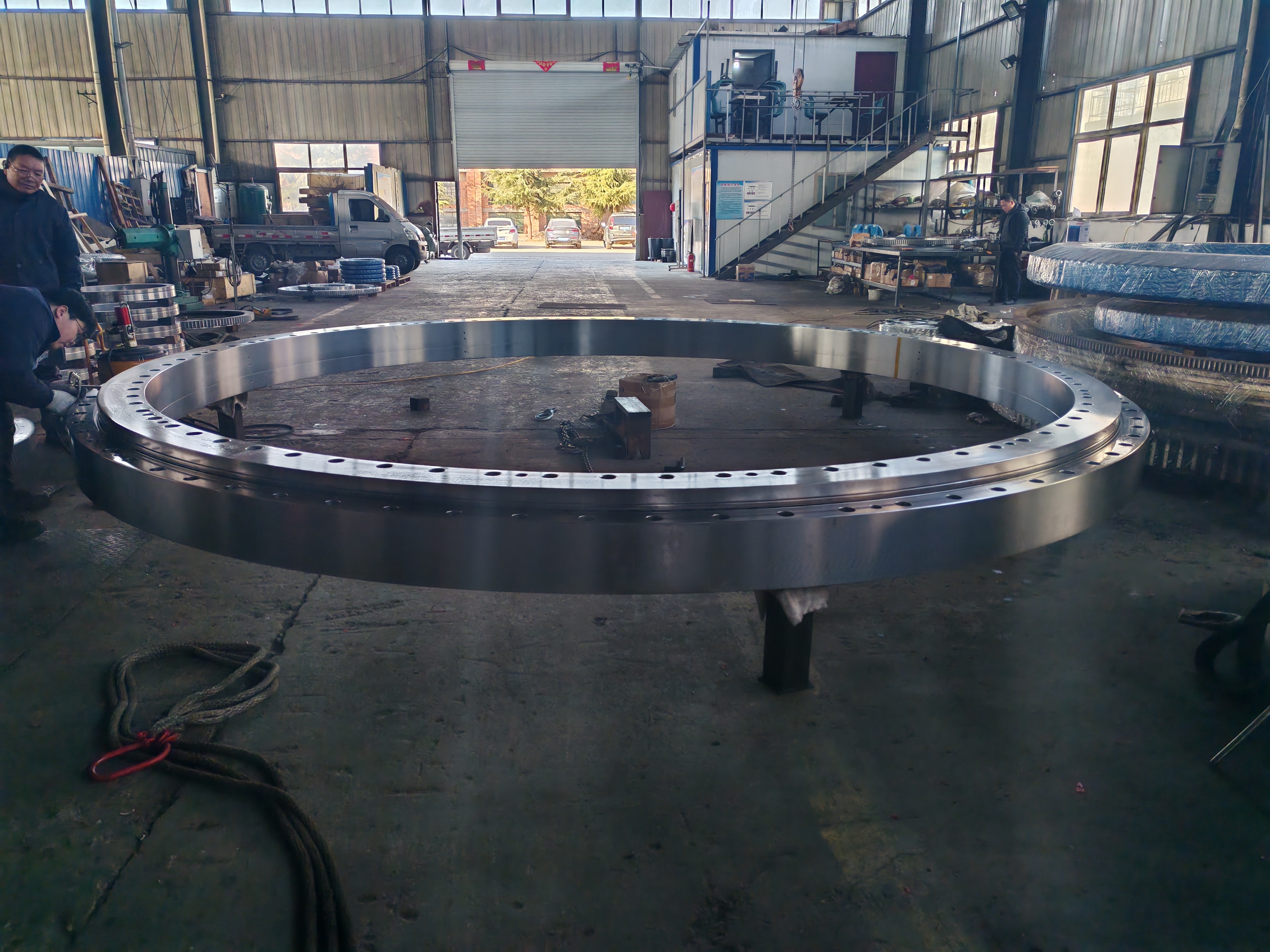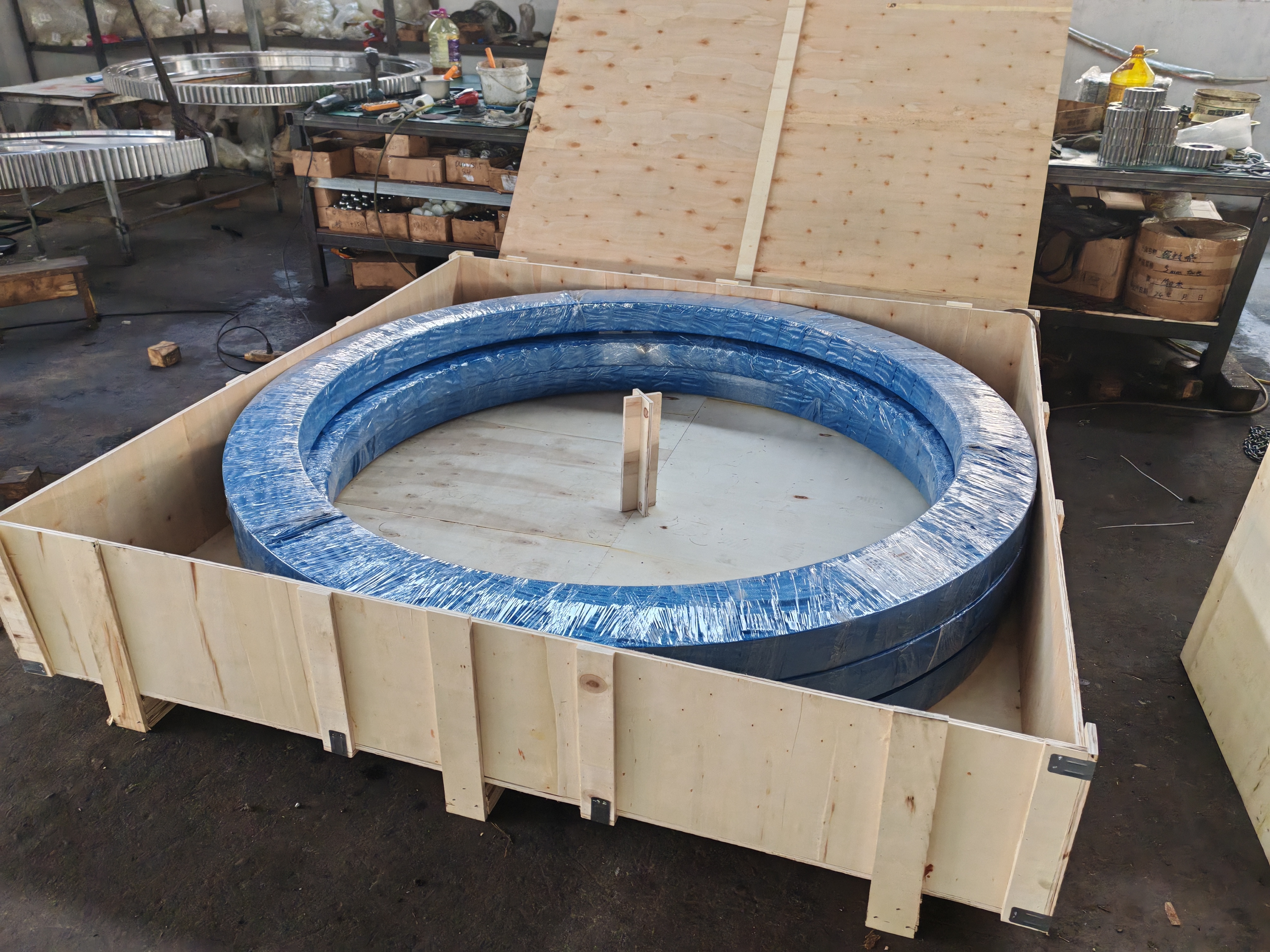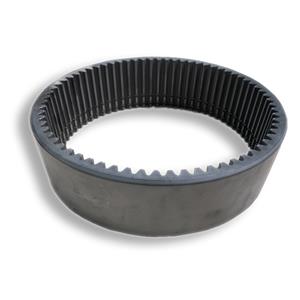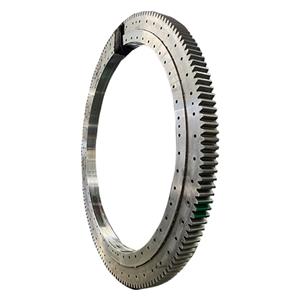How to perform fault diagnosis and maintenance of slewing bearings?
Slewing bearings are common key components in large mechanical equipment, such as excavators, cranes and other heavy equipment, and they bear the important function of supporting and rotating mechanical devices. Due to long-term workloads and harsh working environments, slewing bearings are prone to failures, affecting the normal operation of the equipment. Therefore, it is very important to perform fault diagnosis and regular maintenance. The following are some suggestions for fault diagnosis and maintenance of slewing bearings.
First, the key to fault diagnosis is to find out the cause of the bearing failure by observing and detecting the operating status of the bearing. Luoyang hengguan introduces that common fault symptoms include abnormal noise, vibration, overheating and poor lubrication. For abnormal noise and vibration, professional instruments can be used for detection, such as vibration measuring instruments, to perform vibration spectrum analysis and spectrum comprehensive judgment on the bearing. For overheating problems, infrared thermometers can be used to detect bearing temperature and determine whether there is overheating. For poor lubrication, it can be judged by checking the color and viscosity of the grease, as well as the working status of the lubrication system.
Secondly, according to the results of the fault diagnosis, corresponding maintenance measures are taken. Common maintenance measures include replacing bearings, cleaning the lubrication system, and adjusting the amount of grease used. For the replacement of bearings, it is necessary to select the appropriate bearing model and specifications according to the use requirements of the equipment, and adopt the correct assembly method and technical requirements to ensure the installation quality. For the cleaning of the lubrication system, appropriate cleaning agents and tools can be used to clean the bearings and the surrounding lubrication system, and the grease can be replaced in time. The amount of grease used should be adjusted according to the actual situation to ensure that the grease can fully lubricate the bearings but will not accumulate excessively.

In addition, it is also very important to perform regular maintenance of bearings. It is generally recommended to inspect and maintain the bearings at regular intervals to ensure the normal operation of the equipment. The content of maintenance includes checking the quality and use of grease, cleaning the lubrication system, checking the state and wear of the bearings, etc. At the same time, the working environment of the equipment should also be properly adjusted to avoid the erosion of the bearings by external substances such as dust and moisture. It should be noted that the maintenance of the bearings should be carried out by professional technicians and operated in accordance with the requirements of the equipment manufacturer.
After that, for the fault diagnosis and maintenance of the slewing bearing bearing, certain professional knowledge and experience are required. Therefore, it is recommended that users should receive professional training and learning before using such large-scale mechanical equipment to understand its structure and working principle and master basic fault diagnosis and maintenance techniques. In addition, it is also necessary to regularly maintain the equipment and establish a complete maintenance record to facilitate tracing and analyzing problems.

As an important component of heavy equipment, the failure of the slewing bearing will directly affect the working quality and life of the equipment. Therefore, fault diagnosis and regular maintenance are the key to ensuring the normal operation of the equipment. Through reasonable fault diagnosis methods and corresponding maintenance measures, the service life of the slewing bearing can be extended, the working efficiency of the equipment can be improved, and the safety and stability of production operation can be ensured.




